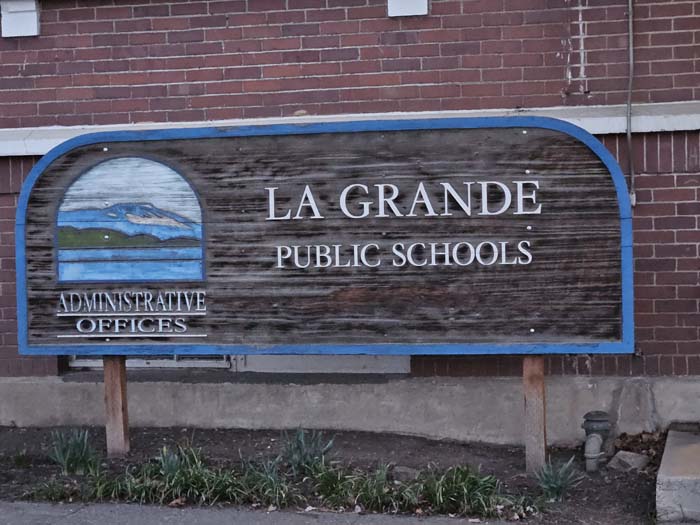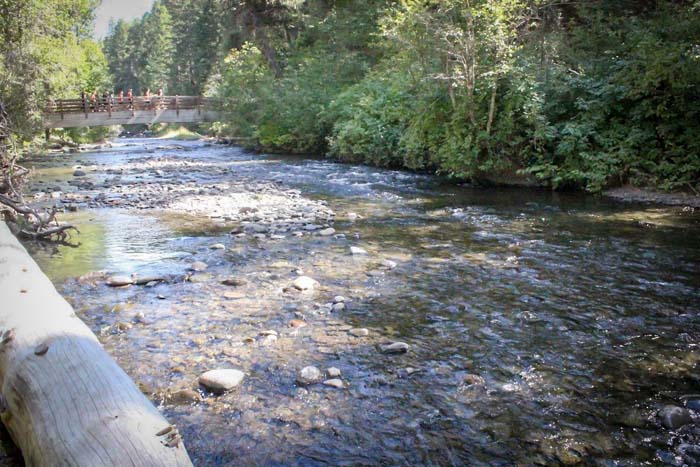Blacksmith school opens in La Grande
Published 7:00 pm Wednesday, June 14, 2023

- Peter Clark, left, adjusts the placement of a metal rod in the forge while Shawn Morrill observers during a class at the Fire Arts Blacksmithing School on Saturday, June 10, 2023, in La Grande.
LA GRANDE — In the early history of every progressive community, there was a blacksmith, whose skills were in such high demand that it ranked right up there with lumber milling, flour milling and shoemaking.
Trending
“The blacksmith is the person that brought us the modern world,” said Peter Clark, blacksmith, instructor and owner of Fire Arts Blacksmithing School, 702 Adams Ave., La Grande.
All other tradesmen were dependent on the tools made by a blacksmith.
“The stone mason had to go to the blacksmith to get his chisels and his hammers. The cobbler had to go to the blacksmith to get his scissors, knives and stakes to do shoes on,” Clark said.
Trending
Blacksmiths made the early plows and farm implements. Clark said that John Deere was a blacksmith. In La Grande’s early history, the Rynearson brothers were well-known blacksmiths, who made plows and repaired farm implements for pioneers. In more modern times, there was the late Bob Gilmore, a blacksmith from La Grande with whom Clark traded many a strange-looking metal tool.
“No community could thrive without a blacksmith. People could not build houses without nails made by a blacksmith,” Clark said. “Back in the day, people would burn down a decrepit house just to get all the nails and hardware out of it.”
With the rise of industrialization and mechanized production, the role of blacksmiths changed into one of manufacturing horseshoes and repairing wagons and carriages. However, with the introduction of engine-powered tractors, automobiles and modernized welding, blacksmiths all but disappeared.
During the Great Depression, blacksmithing experienced a brief revival when the government hired smiths to help make tools and create buildings, like Timberline Lodge on Mount Hood. After World War II, some of these blacksmiths worked in plants and factories maintaining industrial machinery.
Blacksmithing experienced another revival, Clark said, in the 1970s by back-to-the-earth artisans who had their own studios. The interest was not sustainable, however, and today there are only a handful of blacksmiths in Oregon.
That’s why Clark and his wife and business administrator, Sue Miller, founded the Fire Arts Blacksmithing School, the first school of its kind in Northeastern Oregon. They began collaborating on their business plan before the pandemic started, but due to COVID-19 restrictions, they postponed leasing a space in La Grande.
“But as the pandemic went on, things loosened up a bit, and we felt more confident,” Clark said. “We took over the business space at 702 Adams Ave., La Grande, in December 2021. I held a couple of private classes there, and then this late winter and spring, I officially opened the school and started advertising classes. I’ve held four classes there so far.”
Classes are three hours in length and are beginner based.
“It’s a hands-on process, and I want people to make a finished project and take it home,” Clark said. “As I see what the community wants, I’ll tailor the classes to their specific needs.”
So far, people have expressed an interest in knife making, period hardware, wall hooks, small hammers, fire pokers and cooking utensils. The real focus is hammer-anvil, and beyond that there are a multitude of tools designed to manipulate the metal in specific ways. There are no power hammers or power tools except for a grinder and drill press.
Clark said the school is funded through enrollments.
“So as I get students through, I can buy more equipment to give us more variety,” he said.
The Fire Arts Blacksmithing School classroom is equipped with six anvils and three forges to accommodate the instructor and five students per class.
The blacksmithing classes have attracted students from 14 years old to retired seniors looking to explore and learn a new skill. School groups are also welcome.
“I’ve had North Powder School and Grande Ronde Academy come through for field trips,” Clark said.
He enjoys teaching young students because classes in blacksmithing are not usually offered in high school, so Clark feels good about filling that educational gap. He believes that there is a need for more young people in the trades and that it can provide a good life if the person is willing to work hard.
The Fire Arts Blacksmithing School will be open year-round except for the hot months of July and August. Working around those months, classes will be held every second Saturday of the month with fill-in classes at request. The number of classes will increase in response to demand, and all classes will be announced on the blacksmith school’s website.
Clark is credentialed through the California Blacksmiths Association (CBA) to instruct the National Curriculum Level I and II, and he is also working at getting his instructor’s credentials through the Artists Blacksmith Association of North America (ABANA).
The curriculum developed through CBA/ABANA is a foundational skill set developer, he explained. The Level I project involves making a gate latch, and a Level II project involves making a grille and learning small-scale joinery, forge welding and tool making. It takes 18 months or more to achieve the Level II certification.
“I completed the ABANA Level II grille in March and shared it with CBA, so I’m now considered a Level II instructor,” Clark said. “Level III is a 300-hour project, and I’m trying to find the time to make it. I’ve done a lot of the moves that are in Level III, making my own tools and laying things out according to dimensions. I just need to put that together in that project.”
Clark is a native of Larkspur, California, and he had a blacksmith shop set up in the Sierra foothills. He said that online dating brought him initially to La Grande, where Miller lived and farmed. Then, in 2014, they bought a farm together in Summerville. Besides farming, they also created a blacksmith studio there and established Northwest Skillet Company, showcasing Clark’s hand-forged skillets and utensils.
Clark attended Sonoma State University and pursued an arts degree. In that studio his medium was cast bronze. The studio also had a full blacksmithing setup, which Clark asked to use. He started to read about blacksmithing at the library and practiced making things in the studio.
“It fascinated me what you could do with metal and steel specifically,” he said.
With a background as a journey level cabinet and furniture maker, Clark has always liked working with his hands.
“I get an incredible sense of satisfaction in seeing the finished project,” he said. “I like a good challenge, and that’s why I’m drawn toward metal because there are so many things you can do with it.”
Clark believes there are others with a similar interest in blacksmithing, and now they have a school to pursue it.
“If you have any interest in how things are made in metal, join us — that’s what we explore,” he said.
To enroll for classes at the Fire Arts Blacksmithing School, go to the school’s website — fireartsblacksmithingschool.com — or email nwskillet@gmail.com.









